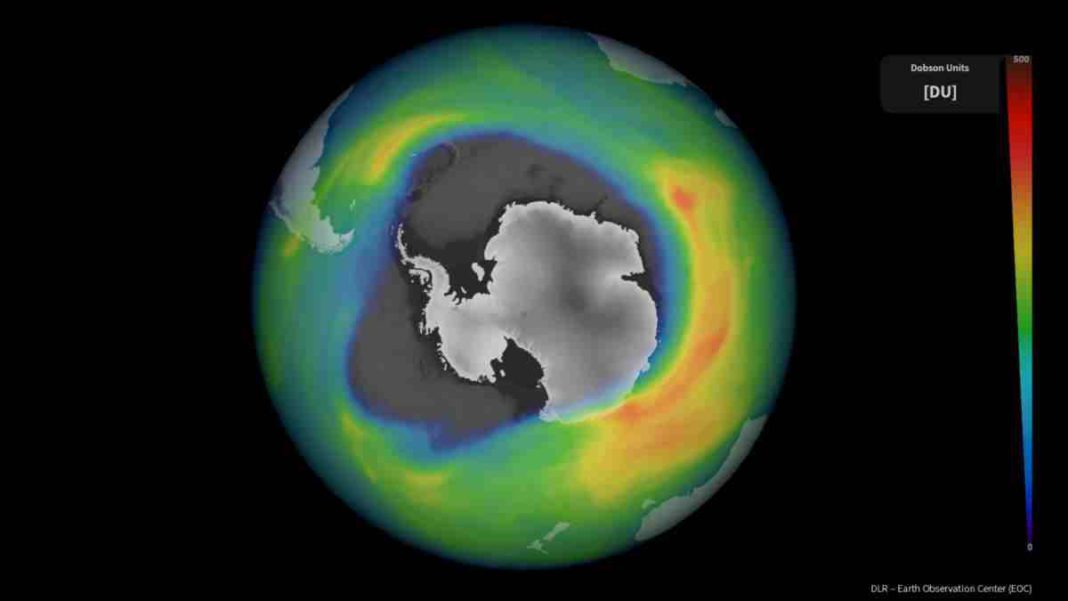ANTARCTICA: The ozone hole over Antarctica has expanded to approximately three times the size of Brazil, marking one of the most significant recorded instances of ozone depletion. The European Space Agency (ESA) reported this startling revelation based on data collected by its Copernicus Sentinel-5P satellite on September 16, 2023.
This vast “ozone-depleting area,” as scientists refer to it, has raised questions and prompted investigations into its underlying causes. Experts are now exploring a possible connection between the ozone hole’s expansion and the eruption of Tonga’s underwater volcano, Hunga Tonga Hunga Ha’apai, in early 2022.
The eruption of the Tongan volcano sent shockwaves through the region and triggered tsunami warnings. The dramatic explosion was captured in satellite imagery as smoke and ash billowed into the atmosphere.
Researchers are now investigating whether the release of volcanic gases and aerosols during the eruption may have played a role in exacerbating the depletion of the ozone layer over Antarctica.
The European Space Agency’s Copernicus Sentinel-5P satellite, launched in October 2017, has been crucial in monitoring Earth’s atmosphere. It forms part of the Copernicus Sentinel missions dedicated to environmental monitoring for the European Union.
ESA’s recent findings indicate that the ozone hole reached an astounding area of approximately 26 million square kilometres.
This expansion ranks among the most significant seasonal ozone holes ever recorded, trailing only behind the record set in 2000 when it reached nearly 28.4 million square kilometres in size.
The dimensions of the ozone hole fluctuate throughout the year, typically peaking between mid-September and mid-October.
This phenomenon is associated with the weakening and eventual dissipation of the polar vortex in the southern hemisphere as stratospheric temperatures rise. The ESA predicts that ozone levels in the affected region will return to normal by the end of December.
The ozone layer in Earth’s stratosphere plays a crucial role in shielding our planet from harmful ultraviolet (UV) radiation from the Sun. It consists of a high concentration of ozone molecules, each containing three oxygen atoms, in contrast to the usual two oxygen molecules.
Diego Loyola, a senior scientist at the German Aerospace Center (DLR), emphasized the accuracy of the Sentinel-5P’s ozone measurements. He stated, “The Sentinel-5P total ozone products have accuracy at the percentage level compared with ground-based data, and this allows us to monitor the ozone layer and its evolution closely. The Tropomi measurements extend the global ozone data record of European satellite sensors covering almost three decades.”
The expansion of the ozone hole over Antarctica is a matter of grave concern due to its potential environmental and health impacts.
Further research and continuous monitoring will be essential to understanding the causes behind this significant development and implementing measures to safeguard the ozone layer.
Also Read: Ozone Layer Likely to be Healed by 2040



